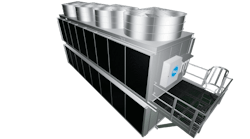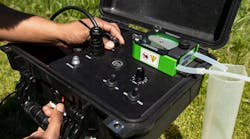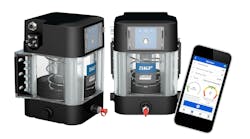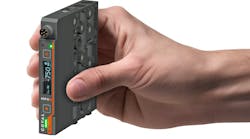Engineered vs. Non-Engineered Hose Assemblies
Industrial hose assemblies can be classified into either engineered or non-engineered hose assemblies. It is important to note that both engineered and non-engineered industrial hose assemblies are extremely safe when they are manufactured and assembled to NAHAD specifications. However, it is imperative to comprehend the difference between an engineered vs. a non-engineered hose assembly and the associated impact.
A hose assembly is considered to be an engineered hose assembly if the hose manufacturing company manufactures all components of the hose assembly; the hose, the fitting and the ferrule. All of the components of an engineered hose assembly are engineered and designed to integrate with each other. After an engineered hose assembly has been assembled the working pressure of the hose assembly will be the same as the working pressure that is embossed on the lay-line of the hose. In other words it is impossible to de-rate the working pressure of the hose with an engineered hose assembly. Most hydraulic hose assemblies are considered to be an engineered hose assembly.
Unlike hydraulic hose assemblies, most industrial hose assemblies are not considered to be engineered assemblies. Typically, the company that manufactures the hose is not directly responsible for the manufacturing, engineering and design of the fittings, ferrules, crimp dies or crimp machines. Therefore, the components of industrial hose assembly are not specifically designed to integrate with each other. Also, the construction of industrial hose can vary greatly; the OD of the hose can fluctuate, which can affect the ferrule size and the crimp specification.
All non-engineered industrial hose assemblies must be thought of as a chain that is only as strong as its weakest link. Each component of a non-engineered hose assembly is rated at a specific working pressure; the working pressure of the completed assembly will be equal to the working pressure of the weakest component. Please note that the working pressure of an industrial hose can be de-rated by the couplings that are attached to the hose.
For example, if a 3-in. chemical hose that has a published working pressure of 200 psi is used in an industrial hose assembly with 3-in. Dixon EZ Boss lock type E cam and groove fittings (which are rated at 125 psi working pressure) the hose assemblies working pressure will be 125 psi. In this example, the 3-in. chemical hose has been de-rated from 200 to 125 psi. Unfortunately, the lay line on the hose will still indicate that the working pressure of the hose (200 psi) and not the working pressure of the hose assembly (125 psi) which can lead to human error in the field.





